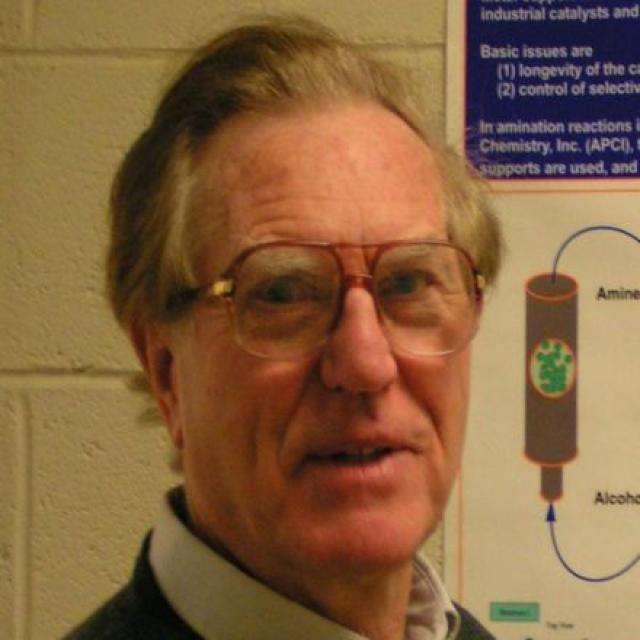Research into the relations between the structure and physical properties of solids, their surface properties, and their ability to guide chemical reactions along specific pathways. Solid state chemistry and catalysis phenomena are investigated by modern means of electron and optical spectroscopies and electron microscopy involving microdiffraction and X-ray microanalysis. OLEDs and PLEDs.
Surface science of atomic and molecular overlayers is being pursued using high energy and angle resolution X-ray and UV photoelectron spectroscopy (HR X(U)PS), electron energy loss spectroscopy (HR EELS), low energy electron diffraction (LEED), temperature programmed desorption (TPD), and isotope methods.
Quantum chemical state-of-the-art studies are carried out of the reaction pathways and the structure of surface complexes using all-electron methods, including calculations of core-level chemical shifts for HR X(U)PS.
Established an NSF-sponsored program in "Chemistry of Materials Synthesis and Processing", a 5-year B.S./M.S. program which bridges undergraduate and graduate education. Directed the Hewlett Grant Program for Freshmen and Sophomores in Chemistry, Materials, Physics, Chemical Engineering, and Biosciences.
Chemical demonstrations in introductory courses are designed, assembled, and published, e.g. "Diffraction of a Laser Light by a Memory Chip," K. Klier and J.A. Taylor, J. Chem. Ed. 68 , (1991) 155.


